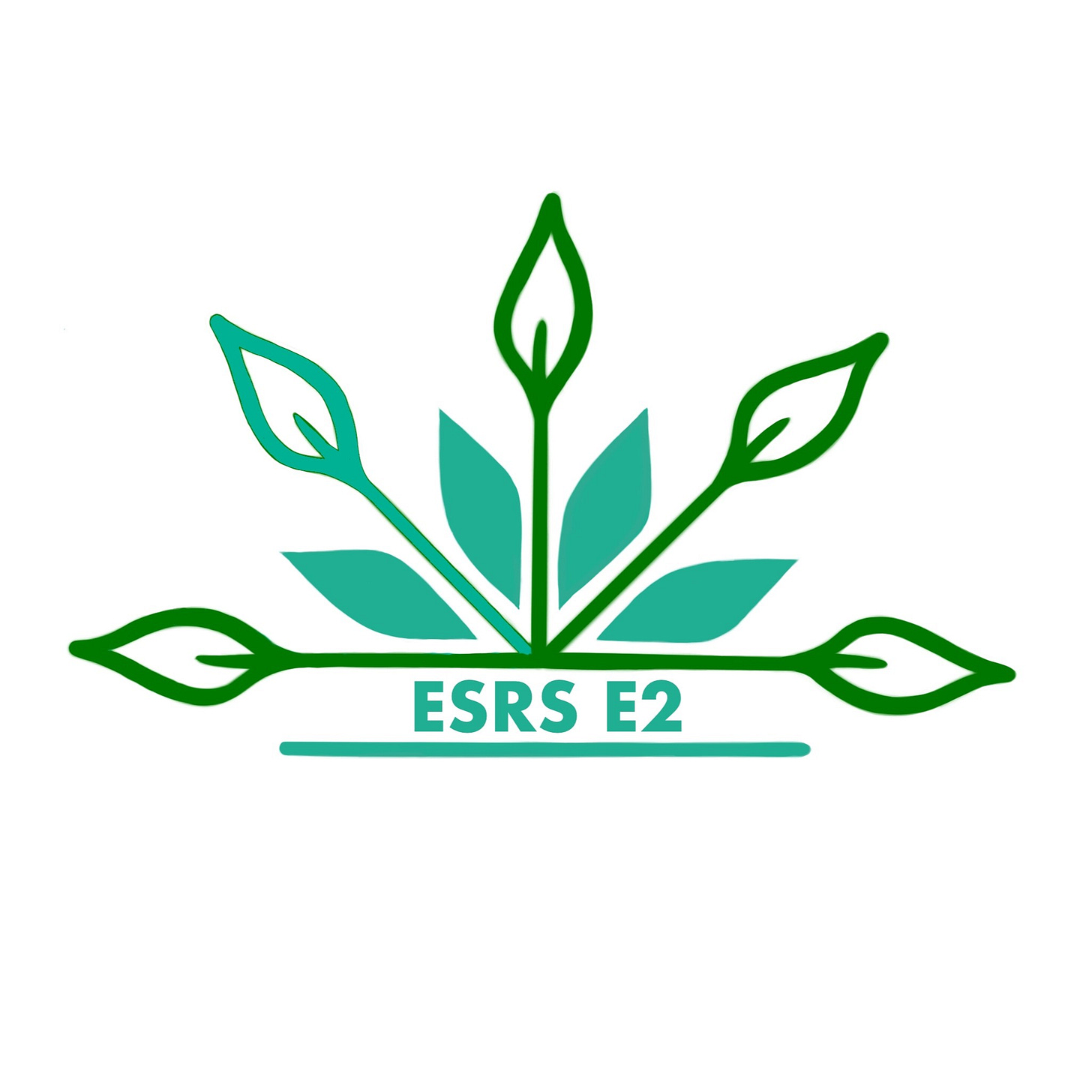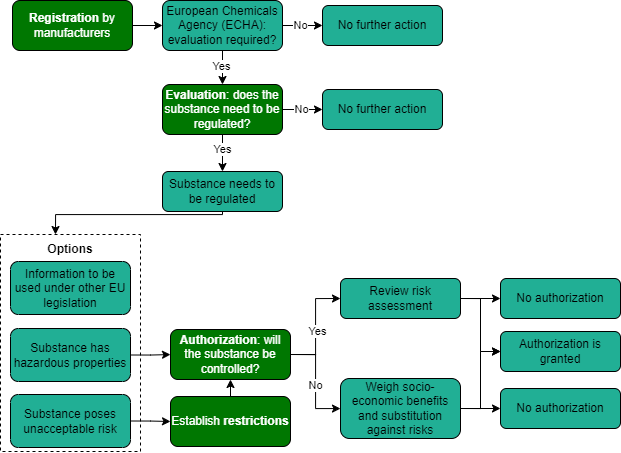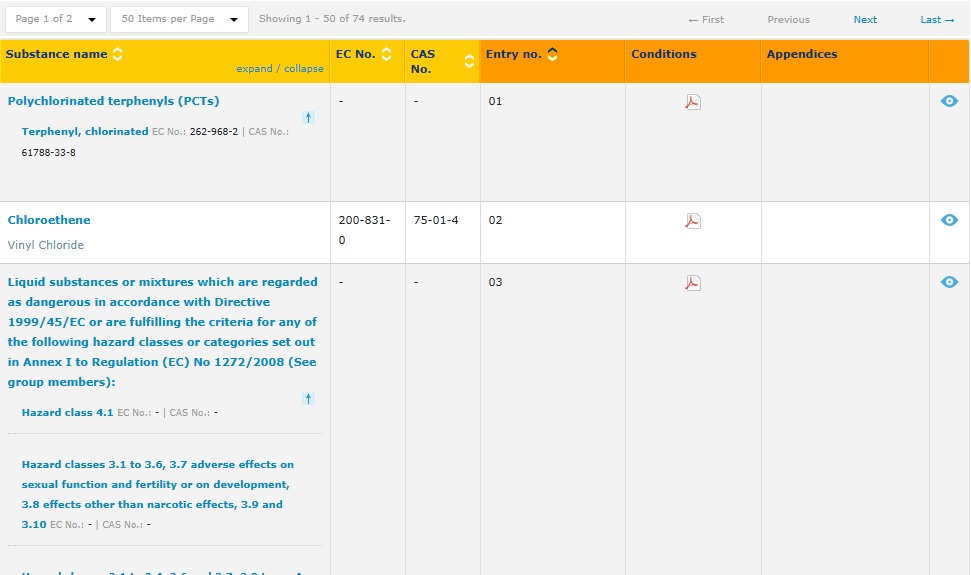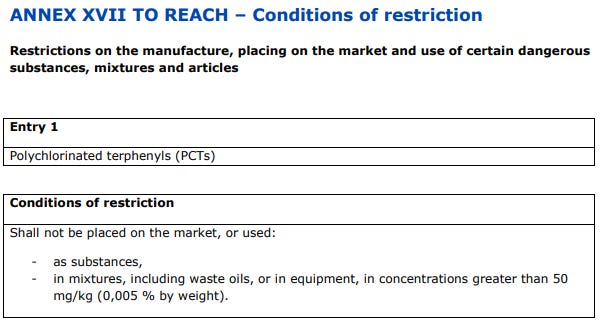Pollution: What are substances of very high concern?
Pollution: What are substances of very high concern?
1. Introduction
Chemicals are essential to modern industries, but some pose significant risks to human health and the environment. To regulate these risks, the European Union established the REACH Regulation (Registration, Evaluation, Authorisation, and Restriction of Chemicals), which sets strict guidelines on how hazardous substances are managed.
This article explains the criteria used to classify a substance as an SVHC, provides insight into the regulatory framework that governs SVHCs, including how substances are assessed, and details some of the obligations that companies face when handling SVHCs.
2. What are Substances of Very High Concern (SVHCs)?
A Substance of Very High Concern (SVHC) is a chemical that poses serious risks to human health or the environment. Under the EU REACH Regulation, certain substances are classified as SVHCs if they meet strict hazard criteria.
How is a substance classified as an SVHC?
A chemical may be identified as an SVHC if it falls into one or more of these categories:
Carcinogenic, mutagenic, or toxic for reproduction (CMR)
These substances can cause cancer, alter DNA, or harm reproductive health.
The classification follows the CLP Regulation, which standardizes hazard labeling in the EU.
Persistent, Bioaccumulative, and Toxic (PBT) or very Persistent and very Bioaccumulative (vPvB)
Persistent: The substance does not break down easily in the environment.
Bioaccumulative: It builds up in living organisms over time.
Toxic: It can cause long-term harm to humans or wildlife.
These classifications follow Annex XIII of REACH.
Substances of Equivalent Concern
Some substances may not fit neatly into the above categories but still pose serious risks.
A common example is endocrine disruptors, which interfere with hormones and can cause developmental or reproductive harm.
There are over 1000 substances that may meet SVHC criteria. However, under REACH compliance, only those officially placed on the Candidate List by the European Commission and ECHA (European Chemicals Agency) are considered SVHCs in a legal sense. More about the candidate list below.
What happens if a substance is classified as an SVHC?
Once a chemical is listed as an SVHC:
It is added to the Candidate List for potential future regulation.
Companies must provide safety data sheets and inform customers if the substance is in their products.
Some SVHCs may require authorization for use, meaning companies must justify why they still need to use them and prove there are no safer alternatives.
This system makes sure that hazardous substances are gradually replaced with safer alternatives where possible.
3. Regulatory framework and its origins
The regulatory foundation for identifying SVHCs lies primarily with REACH. Adopted by the European Union in 2007, REACH requires companies to register the chemicals they produce or import, assess their risks, and communicate this information throughout the supply chain. The European Chemicals Agency (ECHA) plays a central role in evaluating substances and maintaining a list of SVHCs. This list is updated regularly as new scientific evidence emerges.
Key components of REACH:
Registration: Companies must register any chemical substances they produce or import in quantities exceeding one tonne per year with the European Chemicals Agency (ECHA). This process provides detailed information about the substance's properties, uses, and safety measures. The amount of information required depends on the tonnage of the substance placed on the market per year.
Evaluation: ECHA, in collaboration with EU member states, assesses the information submitted during registration to ensure compliance and to further investigate substances of concern. This evaluation helps identify potential risks associated with specific chemicals.
Authorisation: Certain hazardous substances, known as Substances of Very High Concern (SVHCs), are subject to authorisation. The goal is to control their risks and promote their gradual replacement with safer alternatives when feasible. Companies must apply for permission to continue using these substances, demonstrating that risks are adequately managed or that no suitable substitutes exist.
Restriction: REACH can impose restrictions on the manufacture, marketing, or use of specific substances if they pose unacceptable risks. Restrictions can apply to particular uses or ban a substance entirely.
Regulations like REACH ensure that hazardous chemicals are monitored and controlled, thereby protecting human health and the environment. Other related regulations, such as Directive 2010/75/EU on industrial emissions, complement these efforts by addressing how pollutants, including hazardous substances, are managed and reported.
4. Understanding REACH lists
The European Chemicals Agency is the central body responsible for implementing REACH. The agency also maintains publicly accessible databases containing information on registered substances, including their hazards and safe usage guidelines. These databases, or lists, categorize substances based on their assessment and regulatory status. Such a list looks like this:
When clicking on a substance you will find more information, such as the restriction:
Candidate List
This list includes substances identified as SVHCs due to properties such as carcinogenicity, mutagenicity, reproductive toxicity, persistence, bioaccumulation, or equivalent concern (e.g., endocrine disruptors).
Legal obligations apply when a substance is included in the Candidate List under REACH:
If an article contains an SVHC above 0.1% (w/w), suppliers must inform customers and consumers about safe usage.
Consumers have the right to ask if a product contains Substances of Very High Concern (SVHCs).
Importers and producers must notify ECHA within six months of a substance being added to the Candidate List (e.g., by 21 January 2025).
Suppliers of substances or mixtures containing SVHCs must update their safety data sheets (SDS).
Waste Framework Directive requires companies to notify ECHA if SVHCs exceed 0.1% (w/w) in their articles, and this is published in the SCIP database.
EU Ecolabel Regulation prohibits awarding the ecolabel to products containing SVHCs.
See the list here: Candidate List of substances of very high concern for Authorisation - ECHA
Authorisation List (Annex XIV)
Substances from the Candidate List may be added to the Authorisation List, meaning they cannot be used or placed on the market after a specified sunset date unless a company obtains authorisation. This prioritization is based on factors like hazardous properties, widespread use, and high production volumes. Before finalizing its decision, ECHA launches a three-month consultation where stakeholders can provide input. The aim is to ensure that SVHCs are progressively replaced by safer alternatives.
Companies can apply for authorisation to continue using substances on the Authorisation List. ECHA provides guidance, submission deadlines, and evaluations of applications, including safer alternatives and dose-response data.
See the list here: Authorisation List - ECHA
Restriction List (Annex XVII)
This list specifies substances subject to restrictions, detailing the conditions under which they can or cannot be manufactured, used, or sold. Restrictions can also impose technical measures or labeling requirements. Restrictions are implemented to mitigate identified risks to health and the environment.
Exemptions include:
On-site isolated intermediates
Substances used in scientific research and development
Substances posing risks only in cosmetics
See the list here: Substances restricted under REACH - ECHA
5. Is this relevant to your business?
Determining the relevance of substances of concern or SVHCs to your organization involves a few steps:
Assess your industry and products: Industries such as textiles, packaging, cosmetics, paints, and automotive are more likely to handle these hazardous substances. If your products or materials include chemicals known for CMR, endocrine disruption, or PBT properties, they may be relevant.
Review supply chain information: Look at safety data sheets, supplier disclosures, and regulatory labels. If your suppliers list chemicals that appear on the ECHA SVHC list, it’s a strong indicator that these substances are material to your business.
Stay informed on regulatory changes: Regulations evolve. Regularly checking updates from ECHA and other regulatory bodies ensures you remain compliant and proactive in managing chemical risks.
If you belong to one of the following categories:
Manufacturers and importers: Must identify and manage risks associated with the substances they produce or import, ensuring compliance with registration requirements and providing necessary safety information.
Downstream users: Companies using chemicals in their processes need to be aware of their obligations under REACH, including adhering to usage restrictions and substituting hazardous substances with safer alternatives when possible.
Suppliers: Obligated to communicate information about hazardous substances down the supply chain, ensuring that customers are informed about safe handling and any restrictions.
Sources
REACH Regulation - European Commission
Candidate List of substances of very high concern for Authorisation - ECHA
Substances restricted under REACH - ECHA
Understanding REACH: EU Chemical Regulation Explained
Relevant DR under the CSRD:
ESRS E2: Disclosure Requirement E2-5 – Substances of concern and substances of very high concern





